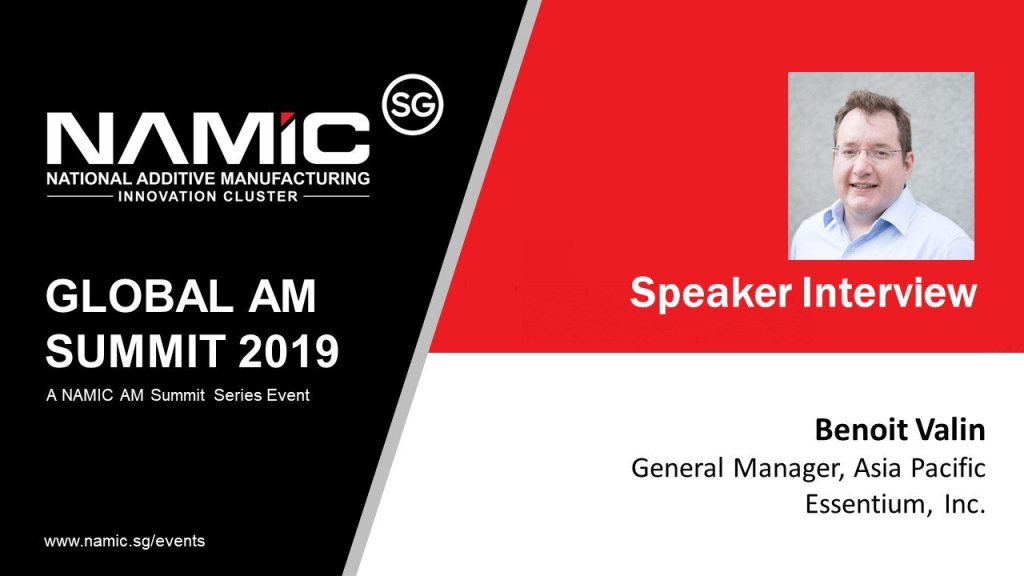- What does the Future of Manufacturing mean to you and your company?
The future of manufacturing is at the intersection of ability, agility and affordability: the ability to scale, the agility to innovate and bring the right product to market quickly, and the affordability to drive competitiveness. With the advancements in 3D printing technologies and an ever increasing functional material portfolio, additive manufacturing is thriving in industrial manufacturing environments and we foresee that an increasing number of industry verticals will soon leverage these technologies and materials to manufacture parts destined to be customer facing.
- Sustainability is the latest buzz word. How is your organization embracing it?
Essentium focuses on developing materials and printing technologies that enable our customers to produce better parts faster, cheaper and cleaner than with other manufacturing technologies. At Essentium we go beyond the subtractive vs. additive mindset and strive to develop high-throughput 3D printing technologies capable of producing functional parts at the same speed, robustness and reliability as a machine tool. Effectively enabling our customers to leverage the lean business models enabled by 3D printing, without having to compromise on the quality, repeatability and functionality of their 3D printed parts.
- Industry 4.0 – where is this Revolution leading towards?
Lot Size One.
The future of consumerism, is no longer the one-size-fits-all it was once, it is increasingly moving towards becoming bespoke, exclusive and tailored to the specific needs & desires of individual customers. The underpinning vision of Industry 4.0 is to transform the path from idea to the customer’s hands, a connected data driven manufacturing ecosystem able to react in real-time to market realities, and adjust, regulate and adapt accordingly.
- What are the key factors to consider in adopting technologies to achieve a Digital Manufacturing Environment?
The industry 4.0’s digital manufacturing environment is made possible by data and the ability to capture, interpret and leverage it. As an organisation strives to achieve this digital state, it must not only consider the type of data, but also the infrastructure it needs to read, record, relay and react to it, as only when this circle is complete will an organisation be able to reap the full benefits of their digital manufacturing environment.
To support this industry 4.0 transformation, Essentium has integrated this feedback loop in both our material and printing technology development lifecycles. Our proprietary material formulations and filament extrusion technologies combined with the flexibility of our High Speed Extrusion printing technology, we are able to dynamically adjust our materials, and machinery, to support the specific and evolving needs of industry.
- Please share your take on the process and trends of AM Material and importance materials development for AM adoption.
The disruptiveness of 3D printing is correlated with breadth of 3D printable materials and their suitability to meet the needs and requirements of specific parts and their function; and with each new material, new industries have the potential of being transformed.
In the last 2 years, the industry have benefited from an explosion of new 3D printable materials; namely highly functional materials, such as: high temperature polymers (such as: PEEK, PEKK, PEI, etc), composites (such as: PP-GF, PA-CF, etc) and application specific materials (such as: ESD, flame retardant, etc) effectively enabling organisations with the opportunity to leverage 3D printing technologies for purposes where it was previously unimaginable to do so.
This new material boom is still ongoing and amplifying, at Essentium our material R&D team is formulating, testing, qualifying and certifying new materials on a near weekly basis, and as our understanding of 3D printing processes and our capabilities in formulating printable materials to meet the specific needs to industry increases, we feel this disruptiveness -and our contribution to it- is no where near it’s end.
- What can be done to further expand the potential of 3D Printing?
3D printing is gaining momentum across all industry verticals, and noticeable impact is already being perceived by organisations worldwide. To further amplify the industrial transformation that 3D printing technologies can enable, efforts need to be made on the qualification of materials, and their printing processes, to meet the needs and requirements of specific applications, industries and conditions of use. To which point, Essentium is establishing a global network of material & application innovation centres to drive advancements in additive manufacturing, in discovering and meeting said requirements.

